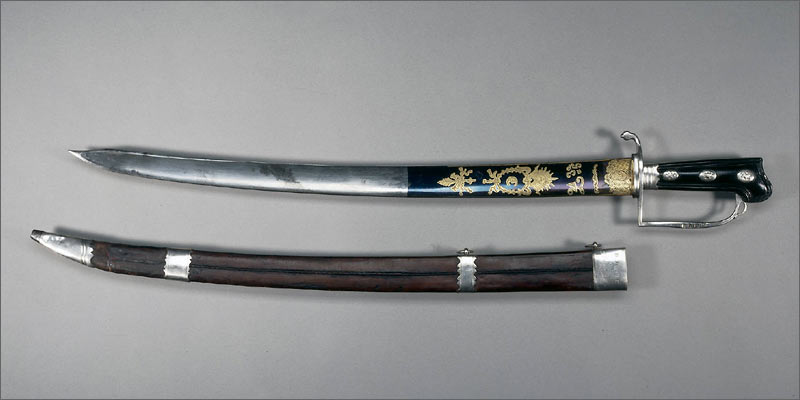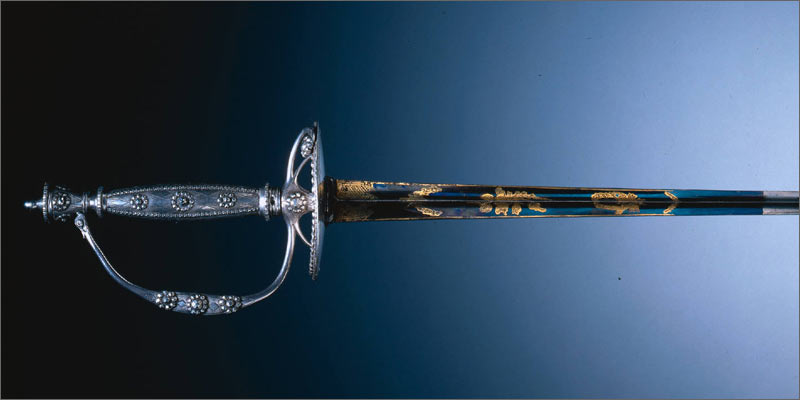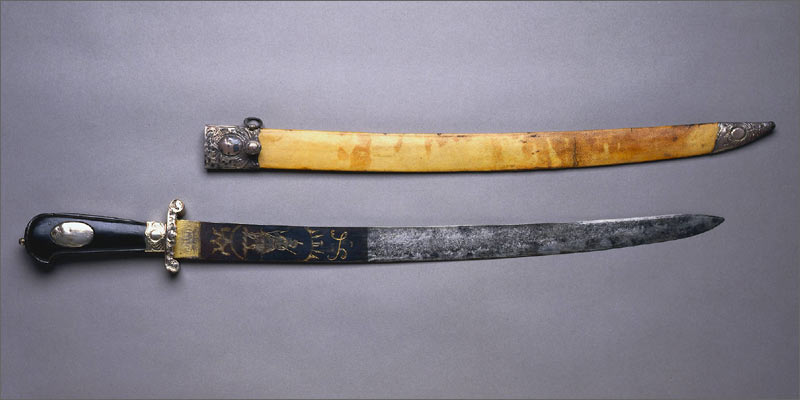The type of sword I would like to commission would be taken from an actual sword once owned by Ewart Oakeshott. It was a small riding sword (21" blade) categorized as type XVI.
[ Linked Image ]
The significant differences between the actual sword and my commission would number three.
- 1. The cross would look like the one seen below.
[ Linked Image ]
2. The blade would be blued, the color could be described as "Peacock Blue".
3. Inscriptions would be engraved in the fuller on both sides of the sword. A cross on one side and the letters "BOAC"* on the other.
My biggest concern is the "peacock blue" blade. Was this actually done to enhance the appeal of swords in the 14th century. If so what were the advantages/disadvantages of blueing the blade vs. the typical presentation of a steel blade? Since I have been unable to find any pictures of such a blade I must assume it was not a common practice. My goal is to follow the description/design that author Michael Jecks has put forth for the sword but only if it passes the "historic feasibility" test. If you have any opinions and/or documentation I'd love to hear from you.
If the project progresses beyond feasibility I would need to find a bladesmith to work with (again, suggestions please) and get an endorsement from Mr. Jecks, who has indicated interest.
So there you have it, my first foray into custom sword creation. May God and the *Beati Omnipotensque Angeli Christi (blessed and omnipotent angels of Christ) help me. :)
Ed Thyberg


